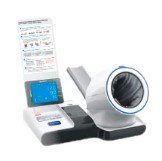Importing Medical Devices for Clinical Laboratories: Regulations and Compliance
Summary
- Medical devices imported for use in clinical laboratories in the United States must comply with Regulations set by the FDA.
- Importers must adhere to the Quality System Regulation (QSR) and obtain premarket approval for certain devices.
- Strict record keeping and labeling requirements must also be followed to ensure patient safety and regulatory compliance.
Introduction
Importing medical devices for use in clinical laboratories in the United States is a complex process that requires strict adherence to Regulations set by the Food and Drug Administration (FDA). Medical devices play a crucial role in patient care and diagnosis, and ensuring their safety and effectiveness is of utmost importance. In this article, we will discuss the Regulations that must be followed when importing medical devices for use in a clinical laboratory in the United States.
Regulations for Imported Medical Devices
FDA Regulations
The FDA is responsible for regulating medical devices in the United States to ensure their safety and efficacy. Medical devices imported for use in clinical laboratories must comply with the Regulations set forth by the FDA. These Regulations are designed to protect patient safety and ensure that devices meet certain Quality Standards.
Quality System Regulation (QSR)
Importers of medical devices must adhere to the FDA's Quality System Regulation (QSR), which sets forth requirements for the design, production, and distribution of medical devices. The QSR outlines good manufacturing practices that must be followed to ensure the quality and safety of medical devices. Importers must have a quality management system in place that meets the requirements of the QSR.
Premarket Approval
Some medical devices require premarket approval from the FDA before they can be imported and used in clinical laboratories. Premarket approval is required for high-risk devices that pose a significant risk to patient health. Importers must submit a premarket approval application to the FDA, which includes information on the safety and effectiveness of the device.
Record Keeping and Labeling Requirements
Record Keeping
Importers of medical devices must maintain detailed records of the devices they import and distribute. These records must include information on the device's manufacturing and distribution history, as well as any complaints or adverse events related to the device. Proper record keeping is essential for regulatory compliance and ensures that devices can be traced in the event of a safety issue.
Labeling Requirements
Medical devices imported for use in clinical laboratories must have proper labeling that includes important information for users. Labels must include the device's intended use, contraindications, warnings, and instructions for use. Proper labeling ensures that devices are used safely and effectively and helps to prevent misuse that could harm patients.
Conclusion
Importing medical devices for use in clinical laboratories in the United States requires strict adherence to FDA Regulations. Importers must comply with the Quality System Regulation (QSR), obtain premarket approval for certain devices, and follow record keeping and labeling requirements. By following these Regulations, importers can ensure the safety and effectiveness of medical devices used in clinical laboratories and protect patient health.

Disclaimer: The content provided on this blog is for informational purposes only, reflecting the personal opinions and insights of the author(s) on the topics. The information provided should not be used for diagnosing or treating a health problem or disease, and those seeking personal medical advice should consult with a licensed physician. Always seek the advice of your doctor or other qualified health provider regarding a medical condition. Never disregard professional medical advice or delay in seeking it because of something you have read on this website. If you think you may have a medical emergency, call 911 or go to the nearest emergency room immediately. No physician-patient relationship is created by this web site or its use. No contributors to this web site make any representations, express or implied, with respect to the information provided herein or to its use. While we strive to share accurate and up-to-date information, we cannot guarantee the completeness, reliability, or accuracy of the content. The blog may also include links to external websites and resources for the convenience of our readers. Please note that linking to other sites does not imply endorsement of their content, practices, or services by us. Readers should use their discretion and judgment while exploring any external links and resources mentioned on this blog.
